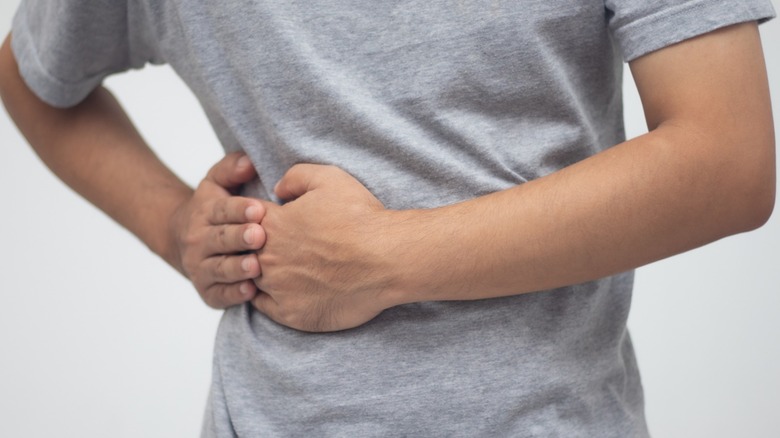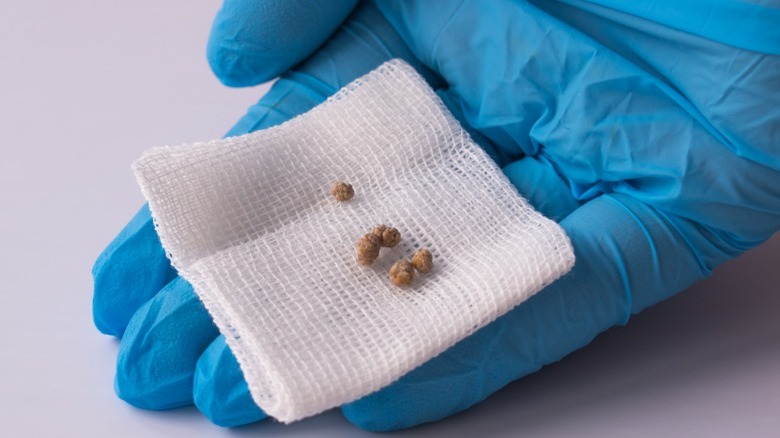When You Should Seek Medical Attention For A Gallbladder Attack
If you or someone you know has had gallbladder issues, you're not alone. Problems involving the gallbladder are fairly common in the United States. Roughly 25 million Americans have gallstones and approximately 1 million new cases are diagnosed annually that will require some form of treatment, notes the National Institute of Diabetes and Digestive and Kidney Diseases.
You probably don't think about your gallbladder too often but, despite its small size, it plays an important role in your digestive process. This small, pear-shaped organ that rests just under your liver releases bile, the yellowish fluid that your liver produces to break down the fat in foods you consume, per Cleveland Clinic. Your gallbladder is a vital part of your digestion in that it connects to several organs in your digestive system through a network of ducts. These ducts form a system that allows the bile to flow from your gallbladder to your small intestine where it acts on the food you've eaten.
A potentially serious gallbladder issue is inflammation of the gallbladder, also known as cholecystitis. This acute or chronic inflammation occurs when bile gets caught in your gallbladder, preventing it from flowing into the small intestine, which puts you at risk for a serious infection, according to Johns Hopkins Medicine.
Some celebrities have gone public about their gallbladder problems, including American pop star Pink, who had to have her gallbladder removed in 2012, per US Magazine. More recently, TV personality Jill Duggar required gallbladder surgery following the birth of her third son (via Yahoo).
Gallbladder attack symptoms and treatment
If you experience severe and sudden pain in the upper right area of the abdomen, this could be a sign that you are having a gallbladder attack. A gallbladder attack, or gallstone attack, occurs when a gallstone gets trapped in a bile duct, hampering the flow of bile to the small intestine. Other symptoms associated with a gallbladder attack include nausea and vomiting, abnormal stools, discolored urine, yellow-tinted skin (jaundice), and fever (via Healthline).
While not all gallstones require treatment, it is vital that you seek medical attention if you experience severe abdominal pain along with fever or vomiting for more than two hours. A medical professional will examine you and conduct tests such as an abdominal ultrasound or CT scan for an accurate diagnosis and best treatment. It may turn out that your doctor discovers your symptoms were related to another serious health issue that shares similar symptoms, such as pancreatitis, appendicitis, or a heart attack, per Healthgrades.
If your doctor determines you have gallstones, the most likely course of treatment will be surgery. The most common surgery to remove gallstones is laparoscopic cholecystectomy. This is typically an outpatient surgery that requires only a minimal incision and a short recovery time lasting about a week. For more serious infections, you may need to have what is known as an open cholecystectomy. This is a far more invasive surgery to remove the gallbladder, requiring a hospital stay lasting about a week followed by about a month of recovery time.


